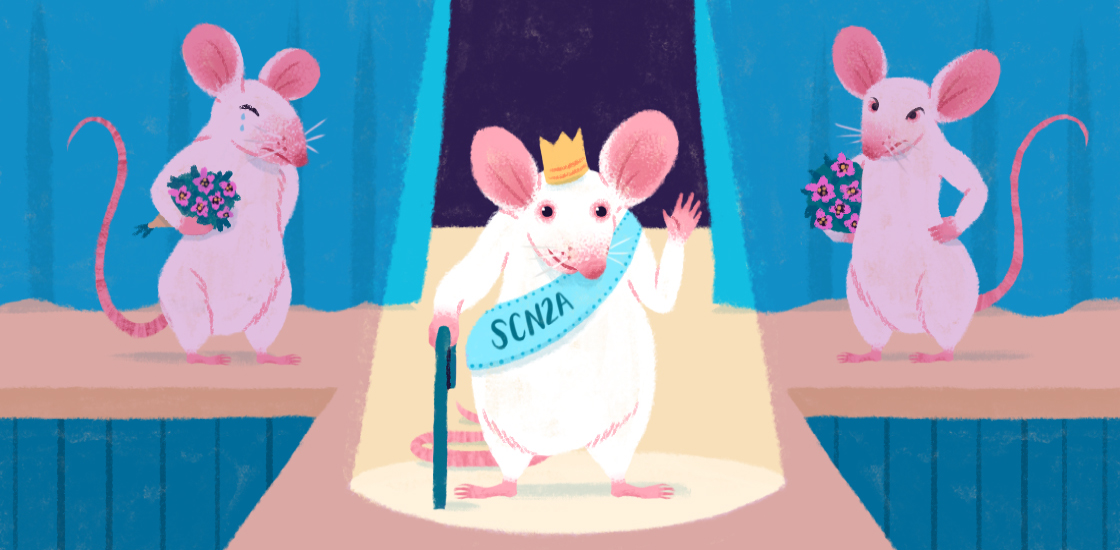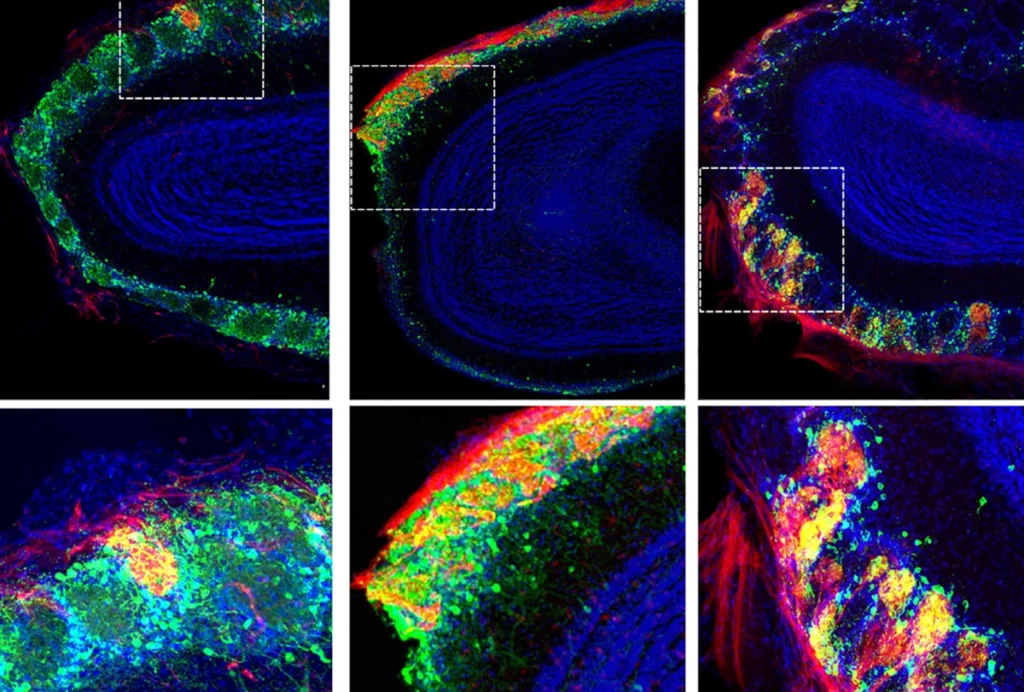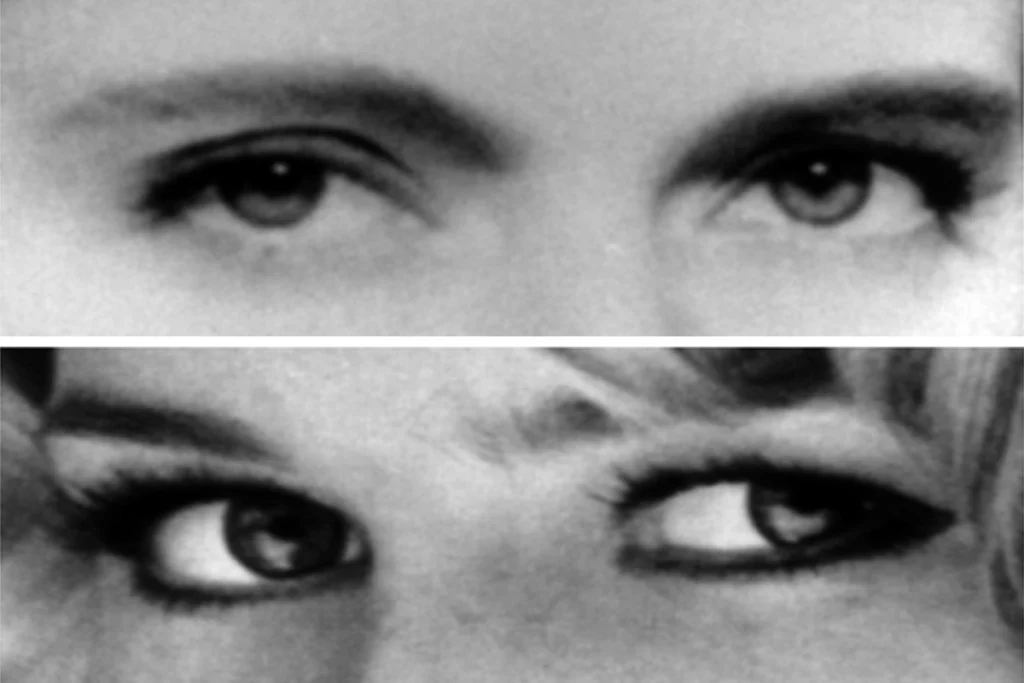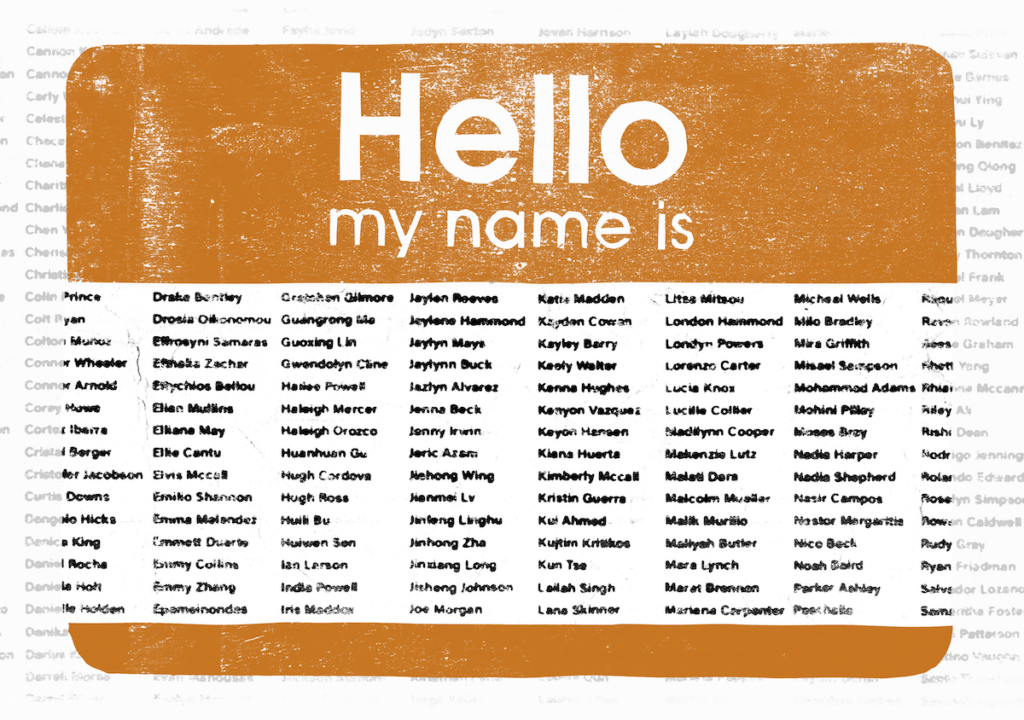‘Retired’ mice find new life as top models for autism
As the list of autism candidate genes grows, some mouse models of the genes turn up in long-forgotten studies.

Nearly 20 years ago, a new strain of mice debuted in a California laboratory. The mice were missing a gene called SCN2A that helps neurons transmit electrical currents1. And the study announcing their genesis was the last word on the matter for many years.
About a decade later, the mouse’s creator, Maurice Montal, sacrificed the few animals left from the colony. He had sent some of his mice to other researchers, and some ended up with a team in Houston, Texas. But they, too, eventually stopped working with the strain.
Perhaps the only one who continued to work with the mice was a postdoctoral researcher named Edward Glasscock, who brought the mice from Houston to the University of Louisiana when he launched his own lab. After years of work, Glasscock found that a mutation in SCN2A can muffle the effect of another mutation that triggers sudden death in people with epilepsy2.
That turned out to be only the beginning of the mice’s comeback.
In June 2016, Kevin Bender, an autism researcher, sent Glasscock an urgent request asking for the mice. Requests from two other autism researchers quickly followed. Soon the mice were populating labs in San Francisco, Baltimore and France.
“I was surprised that there would be such a rush to get them,” says Glasscock, assistant professor of cellular biology and anatomy at Louisiana State University. “Back when I first started working with the mice, it would never have been on my radar that they would have been an important gene for autism.”
Plucked from obscurity:
While the SCN2A mice dwelled in obscurity, researchers had made significant strides in understanding the genetics of autism. The first study on the mice came out in 2000, when researchers knew practically nothing about genes linked to autism. By 2014, a series of massive sequencing studies had generated a list of more than 60 genes with strong ties to the condition.
SCN2A topped this list.
Two other genes, CHD8 and ANK2, were also thrust to the forefront of autism research — and as with SCN2A, mice lacking these genes had been generated years before for unrelated studies. As the list of genes related to autism grows, more of these models may turn up in long-forgotten studies.
“It’s a nice thing that something you built 20 years ago can still have outrageously high relevance,” says Bender, assistant professor of neurology at the University of California, San Francisco.
Like Bender, Brady Maher had also requested the SCN2A mice from Glasscock. Maher had already had some experience with searching for a forgotten mouse model.
In 1996, researchers had made mice with mutations in TCF4, which regulates the expression of other genes and plays a key role in immune cell development3. About a decade later, researchers learned that the gene is involved in Pitt-Hopkins syndrome, a condition related to autism.
Maher tracked down the mice in the literature and found them at The Jackson Laboratory in Bar Harbor, Maine. The gene helps regulate neuronal signaling in a brain region involved in planning, he reported in 2016 in Neuron4.
“I’m sure this will happen again a couple of times, and hopefully I’ll be first on the case to scoop [the mouse] up and start working on it,” says Maher, assistant professor of psychiatry and behavioral sciences at Johns Hopkins School of Medicine in Baltimore, Maryland.
Mouse recycling:
Searching for these mice can sometimes be tricky because the genes are christened with new names as time goes on. TCF4, for example, has had 17 names, including E2-2; and SCN2A held, among many others, the much clunkier moniker NaChalpha(II).
Although researchers had been working with the mice for years, they had not noticed any unusual behaviors because they mostly studied mice lacking both copies of a gene. These ‘knockouts’ are often fatal — which can squash interest in studying them as models for medical conditions.
For example, in 2004, Keiichi Nakayama and his team described mice they had made lacking both copies of CHD8, then called Duplin, and reported that the mice die in utero5. They went on to use the mice to explore the gene’s role in cancer6.
After CHD8 topped the list of autism candidates in 2014, at least five teams rushed to create and characterize their own mutant strains. Nakayama’s team beat them all to the punch.
“We were very surprised with several reports published in 2012 showing that CHD8 is a frequently mutated gene in autism,” says Nakayama, professor of molecular and cellular biology at Kyushu University in Japan. “At that time, we discussed as to whether we should participate in the field of [autism] studies. Given that we had little experience of mouse behavioral tests, many members of my lab were hesitant to start the project.”
In the end, the team collaborated with a mouse behavior expert and showed that mice lacking a single copy of CHD8 have unusual behaviors reminiscent of autism7.
Mice lacking one copy of SCN2A similarly flew under the radar for many years.
Bender had been studying the effect of SCN2A mutations on cultured cells. The obvious next step was to make a mouse missing a copy of the gene. His search brought him to Montal’s paper, where the only description of the mice was that they “breed normally and appear to be functional.”
It took Bender a year from when he first found the paper to track the mice down in Glasscock’s lab and receive them. When the mice finally arrived, Bender and his team doted on the colony’s new founders — which led to a whole new line of research.
“They were so hard to find, and we really had a lot riding on the shipment; we gave them all names from the Book of Genesis,” Bender says. The descendants those mice begat are alive and thriving — and contributing to autism research.
- Planells-Cases R. et al. Biophys. J. 78, 2878-2891 (2000) PubMed
- Mishra V. et al. Hum. Mol. Genet. 26, 2091-2103 (2017) PubMed
- Zhuang Y. et al. Mol. Cell Biol. 16, 2898-2905 (1996) PubMed
- Rannals M.D. et al. Neuron 90, 43-55 (2016) PubMed
- Nishiyama M. et al. Mol. Cell Biol. 24, 8386-8394 (2004) PubMed
- Nishiyama M. et al. Nat. Cell Biol. 11, 172-182 (2009) PubMed
- Katayama Y. et al. Nature 537, 675-679 (2016) PubMed
Explore more from The Transmitter

Rat neurons thrive in a mouse brain world, testing ‘nature versus nurture’

